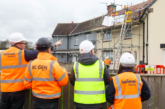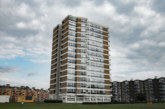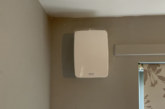 Our latest series explores the important role correct ventilation plays in protecting housing stock — and the health of tenants. In part two, John Kelly, Marketing Manager at Airflow Developments, discusses the importance of effective ventilation in social housing to protect the long-term wellbeing of its occupants.
Our latest series explores the important role correct ventilation plays in protecting housing stock — and the health of tenants. In part two, John Kelly, Marketing Manager at Airflow Developments, discusses the importance of effective ventilation in social housing to protect the long-term wellbeing of its occupants.
It’s estimated that over 15.3 million homes in the UK are at risk of Toxic Home Syndrome, a condition that occurs when airborne allergens such as dust pollen or mould spores — created through every day activities such as breathing, cooking and showering — build-up and pollute the internal environment due to inadequate ventilation.
The dangers of Toxic Home Syndrome have recently been brought to light by joint research published by the Royal College of Physicians (RCP) and the Royal College of Paediatrics and Child Health (RCPCH). The report, titled ‘Every Breath We Take: the lifelong impact of air pollution’, highlights the long-term effects of poor air quality on a person’s health and suggests that major health conditions such as cancer, asthma, heart disease and even obesity can all be attributed to the cleanliness of the air we are exposed to on a regular basis.
Furthermore, with improved levels of insulation effectively sealing the building, occupants can be exposed to high levels of volatile organic compounds (VOCs), polycyclic aromatic hydrocarbons (PAHs) and microbial pathogens that can lead to long-term respiratory issues. With this in mind, it is crucial that social housing providers take affirmative action to protect their residents.
With people spending an estimated 90% of their time indoors, and some air pollutants being five times higher indoors than outdoors, effective ventilation is essential to the wellbeing of occupants. Social housing providers have a responsibility to ensure both new-build and refurbishment projects undergo best practice ventilation to protect their residents. Proactive action is required to prevent the detrimental effect of poor indoor air quality — before it’s too late.
For further information on Airflow visit their website or follow on Twitter @airflowD










